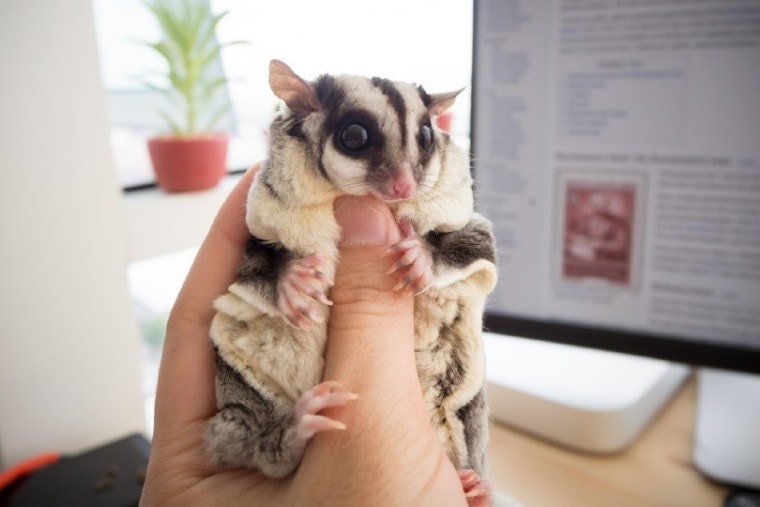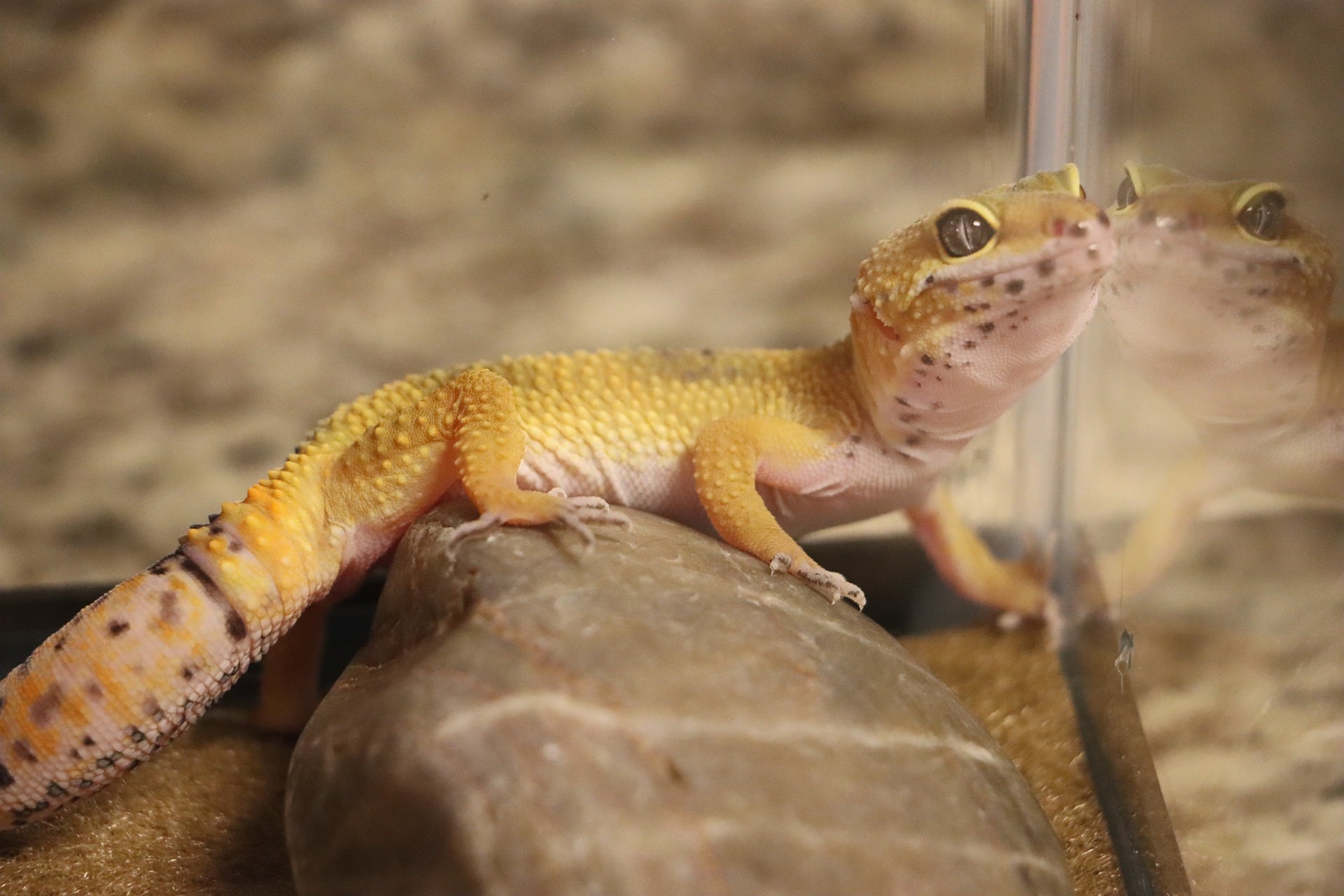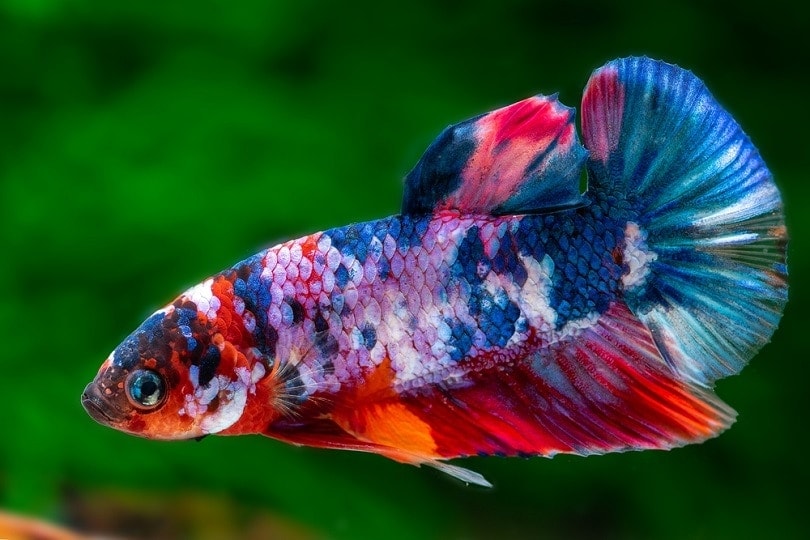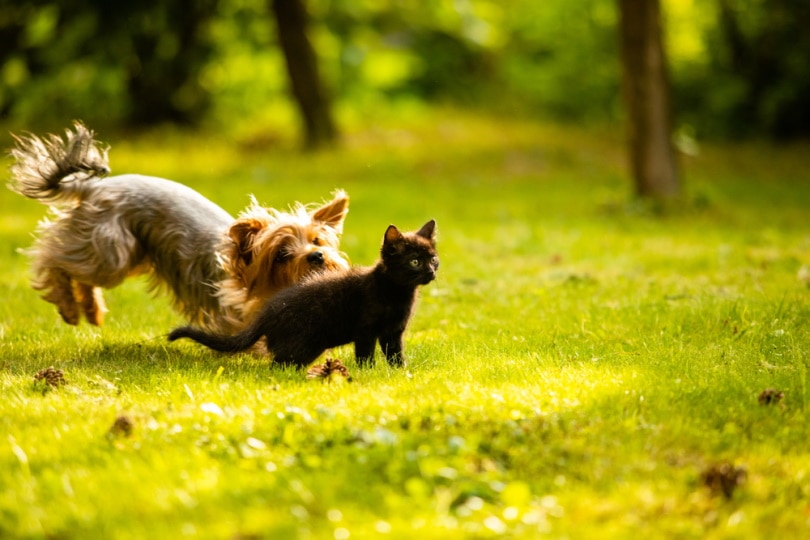
You have probably anticipated bringing your sugar glider home for some time. You’ve done your research about proper care, you bought the supplies, and now it’s time. But how about the bonding process? You might have envisioned immediate cuddles, but the truth is your sugar glider is going to need some time to warm up to their new surroundings. That’s why you’ll want to read our tips on how to bond with a sugar glider.
So, how can you move the process along? Is there anything you can do to charm them fast? How do you know when your sugar glider is bonded to you? Here are nine surefire methods you can use to win them over in no time.

The 9 Tips on How to Bond With a Sugar Glider:
1. Allow Your Sugar Glider to Decompress
You might be so excited to finally get your sugar glider home. They are so soft, cute, and seemingly cuddly that you just want to snuggle them right away. As tempting as it might be, this is actually very stressful for them.
Even though their homecoming was very anticipated, they still have no idea what’s going on. All they know is that their environment changed drastically. There are tons of new sights and smells—all unfamiliar. It’s going to take them a minute to digest all this newness.
For the first two days after your sugar glider comes home, it’s best not to handle or overstimulate them.

2. Make Introductions Slow
It’s not a race, and every sugar glider acclimates at their own pace. Since each sugar glider has a different personality and temperament, some may warm up to you faster than others. Learning your sugar glider’s quirks and body language is so important when you’re starting to bond.
Follow their lead. If they are apprehensive, respect their boundaries. But also, don’t give up on trying to offer attention. The first few weeks are the most important when you’re bonding with each other.
3. Let Them Sniff Your Dirty Laundry
Did you read that right? You certainly did. Our bodies give off lots of interesting smells that can tell our animals lots of things about us. When your sugar glider is just starting to get used to their surroundings, they need to get used to every person in the house, too.
Place a small article of clothing in their cage, whether it be a sock, glove, or undershirt. It gives them a chance to get used to you being around without you actually being around. They can adjust at their own pace without being forced into it.

4. Spend Time Around Them
You can spend time in the same room with your sugar glider without making any type of contact. The more they get used to the creaks, chaos, and chatter in the household, the better. If they’re in a room alone with no interaction, they are much more likely to be withdrawn even after a few weeks pass.
Keep your sugar gliders in a room where there won’t be too much traffic, but just enough to see you often. You want to keep their stress levels down, but their attention open to their surroundings.
5. Talk Softly, Don’t Touch
Speak directly to your sugar glider. Go up to their cage, talk softly. Heck, if you have the pipes, you can even softly sing a little ditty. Soothe them with calming noises. The sweeter you are, the more they will perk up with curiosity rather than fear.
Vocal tones do a lot for communication. Even though they don’t know what you’re saying, they can still tell that you mean no harm. You don’t have to touch them to establish a bond in the beginning.

6. Respect Their Body Language
There’s no reason to rush. Take your time. Pay attention to their silent signals. Do they shy away from you, cower in the corner, or get extremely tense when you touch them? Respect their reactions. Try to keep a hands-off approach until they act like they want to be touched.
The more they lead and you follow, the quicker you can earn their trust.
7. Snacks Anyone?
They say a way to a man’s heart is through his stomach, and your sugar glider is no different. They won’t turn down a tasty treat. Coax them out of hiding with a snack or two. Don’t overdo it, but offer it semi-frequently in the first few weeks.
Also, make sure not to introduce anything too quickly that could upset their bellies. A tummy ache and a scenery change will be a major overload for your sugar glider.

8. Use Bonding Pouches or Hoodie Pockets
You can come up with some pretty interesting ways to carry your sugar gliders around. Since they love climbing, you can strap one to you or put them in your hoodie pocket. They even make bonding pouches designed for carrying around pets.
Holding your sugar glider close makes them feel more connected to you. If they feel cradled, they won’t feel exposed and vulnerable as you’re holding them. They can also get used to your scent, inspiring them to trust you.
9. Patience, Patience, Patience!
What it really all boils down to is good, old-fashioned patience. You have to do things on their terms in the beginning. Getting your little one comfortable is the key to bonding. Once your sugar glider knows that they can trust you, they will want all kinds of attention.
Even though it’s tempting to try to rush the process, understand that the more time you spend on their level—the friendlier they’ll be.


Bonus: Fun Facts About Domesticated Sugar Gliders
Sugar gliders, or Petauridae Breviceps, is a marsupial native to Indonesia and New Guinea. They gained a lot of popularity in the 1990s. Initially, they were wild—so it took a long while to get them to have the same tame temperament as modern-day sugar gliders.
Although domestication has played its part, bonding with your sugar glider is an essential part of the process of owning one. These adorable little creatures can have some of the best personalities of all.

Final Thoughts
We hope this article has helped you learn how to bond with your sugar glider! Ultimately, each sugar glider will bond with you at different moments. You might have a pair that you bought on the same day, and one will warm up faster than the other. This is normal and expected behavior. Just try to spend as much time with them in the beginning as they get used to all this newness. It’s always helpful to keep tabs on the stages of sugar glider bonding among your pets.
The more they get used to all the familiar sights, sounds, smells, and feelings around, the more they’ll seek your attention. You can use a combination of these tactics to see what works best for your sugar gliders.
- See also: Do Cats Hibernate? Reasons & Tips
Featured Image Credit: Rachata Teyparsit, Shutterstock








